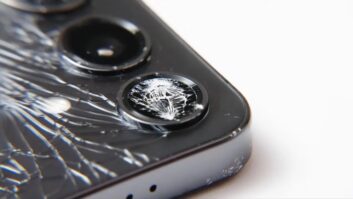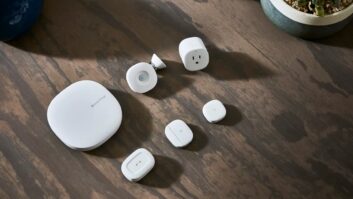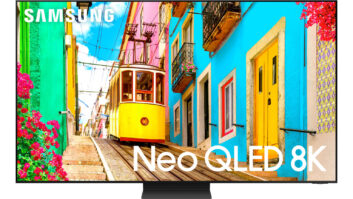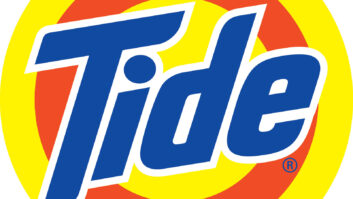By Greg Tarr & Doug Olenick
Targeting a top-three market share position in digital A/V products within the next five years, Samsung announced the launch of a $150 million, two-year national advertising campaign that it hopes will build a digital-perception around the Samsung brand.
At an elaborate send-off staged at New York’s Hammerstein Ballroom, Samsung Electronics CEO/president Jong-Yong Yun announced the campaign while celebrating the company’s 30th anniversary in the U.S. market.
Samsung said it is launching a major national television and print ad campaign using the slogan “Samsung Digit-all: everyone’s invited” to help give consumers the impression of the company as a digital innovator. Additionally, Samsung has pledged to triple its spending on digital product development to $315 million in 2000 from $80 million this year.
Yun said he is determined to see his company seize a market leadership position in emerging digital convergence categories, while “working in cooperation with outside entities” on products and standards. This directive will result in aggressive product development and delivery schedules that already resulted in Samsung being the first to market a fully integrated HDTV receiving set in the U.S. last year.
As a testament to Yun’s philosophy, Samsung presented a string of video-taped congratulatory remarks on the 30th anniversary from Apple CEO Steve Jobs, GE CEO Jack Welch, Sony Corp. president Nobuyuki Idei, and Dell Computer vice chairman Kevin Rollins.
Samsung also demonstrated its commitment to innovation with a number of new digital entertainment, information and communications products, highlighted by what may be the first DVD recorder in the U.S. market.
The player, which will sell for $1,999.95 suggested retail price when it arrives in the third quarter of 2000, will use the DVD-RAM format championed by Matsushita, Hitachi and others. It is currently the only format approved by the DVD Forum. Executives later said Samsung also plans to offer recorders using the DVD-RW format, developed by Pioneer. That technology offers a bare disc, rather than the caddy of the DVD-RAM system.
The company is also working on recorders capable of HDTV resolution, once standards have been adopted. Two basic HDTV recording formats are under review by the DVD Forum.
The recorder slated for next year uses DVD discs sheathed in plastic caddies to protect the sensitive media from handling. The DVD-RAM format currently encompasses both existing discs with 2.6 gigabyte per side capacity and forthcoming 4.7GB discs, which offer the same amount of storage as today’s prerecorded DVDs.
The recorder (model DVR-2000) will also offer two bit rates, with a slower rate permitting longer recording/playing times. To avert copy-protection problems, Samsung has opted to omit both a digital connection and broadband component video inputs and outputs on the recorder. Instead, users will only be able to record interlaced NTSC content delivered through conventional NTSC component video inputs and outputs.
Another HDTV first – a 43W” rear-projection set using Ferro LCD panels – was unveiled at the event. The technology is said to produce a brighter HDTV image with greater contrast than conventional TFT LCD panels.
Samsung plans to offer two screen sizes, 43W” and 50W”. Both display the 720p HD format in native resolution.
The 43W” TV will sell for a suggested retail of $5,999.99 in the second quarter of 2000. Pricing on the 50W” models is still being determined. The unit shown does not incorporate a DTV tuner, but Mark Knox, national product marketing manager, said both models will include format converter circuitry that will enable a signal to be converted into 720p format for display.
Desktop and notebook computers are not included in Samsung’s digital future in the U.S. market, said Yun. Samsung controls almost half the PC market in Korea, he said, but competitors in the U.S. market are too strong for Samsung to enter.
Samsung will use SmartMedia flash memory cards as the primary data transfer device for all its portable audio, video and data products. SmartMedia is only available in 32MB and lower capacities, but Samsung executives said a 64MB card capable of storing 60 minutes of music will ship in three to four months.
The company has no plans to use SD flash memory, being developed by Panasonic, SanDisk and Toshiba, or Sony’s MemoryStick.
Zachary Dimenstein, team leader in Samsung’s product laboratory, said SmartMedia was chosen because it costs less and allows Samsung to create less expensive products. The new products incorporating SmartMedia include several Yepp portable MP3 music/video players and the company’s first entries into the U.S. digital camera market.
Shipping before the end of 1999 are the Yepp E, a portable MP3 player in 32MB ($169.99 suggested retail) and 64MB ($249.99) storage capacities; the Photo Yepp, an MP3 player that displays still graphics and lyrics, ($399.99); and the SDC-80 and SDC-007 digital still cameras, $349.99 and $599.99, respectively.
In the second quarter of 2000, Samsung will ship the Motion Yepp, an MP3 player that can display still and full-motion video, including downloaded music videos. It will carry a $499.99 suggested retail price.
Two additional Yepp portable audio players – the Yepp E Hip Hop and the Yepp D Jazz, each with 32MB of internal SmartMedia – will ship with respective suggested retail prices of $199.99 and $249.99. The latter two players feature new styling designs.
Other new products included a 17″ TFT LCD TV with built-in tuner, which is slated to sell for $3,499.99 in early 2000, and a Digital Photo Album ($799.99) – a monitor that stores digital images and displays them in a variety of styles using built-in digital image processing. It also stores and plays music and sound files.
Samsung also announced two multifunction color printers ($599.99 and $499.99) would ship in the second quarter of 2000. One model, which will have a SmartMedia card, will make prints of digital photos without having to first transfer files to a PC.













